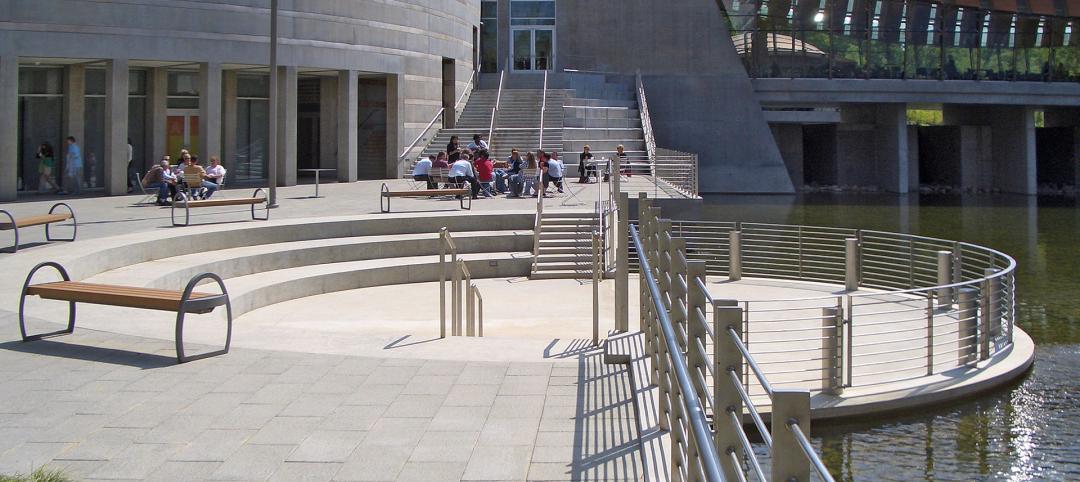Turner Construction Company, the leading general builder in the United States, today announced the results of a new Market Barometer survey that focused on environmentally-sustainable, or “Green,” building, and on sustainable practices in general. Key findings revealed that companies remain committed to constructing Green buildings, but fewer executives said their companies were likely to seek LEED certification when constructing a Green building, citing the cost and difficulty of the LEED certification process.
Brightening outlook for construction projects
Among real estate owners, developers, and corporate owner-occupants, 64% said they expect to undertake new construction projects over the next 12 months (up from 46% in the 2010 survey), and 71% said they expect to undertake renovation projects over the same period (up from 58% in the 2010 survey).
Widespread commitment to sustainable practices
Eighty-four percent of respondents said their companies were committed to environmentally-sustainable practices. Of that percentage, 56% of executives said their companies were extremely or very committed to following environmentally-sustainable practices in their operations, while an additional 33% said they were somewhat committed. In addition to citing financial reasons for this commitment, executives were most likely to cite broader considerations as extremely or very important including belief that it’s the ‘right thing to do,’ (68%), impact on brand/reputation (67%), and customer requirements (61%), along with cost savings (66%).
Reducing energy costs and operating expenses are the key drivers to green construction
Executives were most likely to cite financial factors as being important to their companies’ decisions on whether to incorporate Green features in a construction project. Respondents indicated that energy efficiency (84%) and ongoing operations and maintenance costs (84%) were extremely or very important to their decisions. However, more than two-thirds of executives also said that non-financial factors were extremely or very important including indoor air quality (74%), health and well-being of occupants (74%), and satisfaction of employees/occupants (69%). However, only 37% of executives said it was extremely or very important to their companies to minimize the carbon footprint of their buildings. This suggests that when environmental factors influence the decision to incorporate Green features, these are typically improvements to the indoor environment and its impact on the health and wellbeing of occupants and on the productivity of employees, rather than broader concerns about global environmental impacts. Respondents also indicated that impact on brand/reputation (67%) and employee productivity (67%) were important factors.
A large majority of executives said their companies would incorporate Green features if constructing or renovating a building. Eighty-one percent of executives said their companies would be extremely or very likely to invest in energy efficiency improvements if they were undertaking a construction project, while more than half said they would invest in improved indoor environmental quality (63%), improved water efficiency (57%), and Green materials (53%).
“Energy efficiency figures prominently in the decision-making process of green building primarily because of its large economic impact. Water efficiency in Green construction was seen as less important. This is in spite of a growing awareness that water is a finite resource, both in its operational use and its role in the production of goods and materials. While the direct economic impact of water efficiency is less than the savings on energy, its environmental impact is quite significant,” said Michael Deane, Vice President and Chief Sustainability Officer at Turner Construction.
Fewer companies plan to seek LEED certification
Although the vast majority of companies remain committed to Green buildings, the percentage of executives who thought it was extremely or very likely that their company would seek LEED certification if they constructed a Green building was only 48%, down from 53% in the 2010 survey and 61% in the 2008 survey. Among executives who said their companies were not likely to seek LEED certification, the most important reasons cited were the cost of the certification process (82%), staff time required (79%), time required for the process (75%), and the overall perceived difficulty of the process (74%). It is apparent that in the last four years many companies seem to have become more knowledgeable about the means and methods of designing and constructing Green buildings and are less reliant on LEED as a checklist or a scorecard, as indicated by 52% of executives saying that they prefer to rely on their company’s internal building standards. At the same time, 41% of executives thought it was at least somewhat likely that their companies would consider seeking certification under a rating system other than LEED if they constructed a Green building. Of those executives who indicated they would use another system, 63% said they would be extremely or very likely to consider seeking certification under ENERGY STAR, which again highlights the importance of energy efficiency. It should be noted that some owners may elect to certify under more than one rating system.
“We’ve seen from our own work and the continuing growth of the green building market that in spite of this reduction in enthusiasm for LEED certification, respondents are still building green,” said Deane. “While some respondents are relying on their own standards or are considering another rating system, LEED certification remains the best third party verification of achievement that is recognized by consumers and that can be used to market and promote a property.”
Concerns persist about construction costs and the length of the payback period
When asked what length of payback period would be acceptable when considering Green features, 44% of executives said they would accept five years and almost 80% of executives said they would accept a payback period of five years or longer. Despite the acceptance by most executives of an extended payback period, 61% of executives still felt that the length of the payback period was an extremely or very significant obstacle to the construction of Green buildings while 62% cited higher construction costs. +
Related Stories
| Dec 16, 2014
Architect Eli Attia sues Google over tall building technology
Attia and tech company Max Sound Corp. have brought a lawsuit against Google because of Flux, a Google X-developed startup launched in 2014. Flux creates software to design environmentally-friendly buildings in a cost-effective way.
| Dec 15, 2014
SHoP Architects plans to turn NY's Seaport District into pedestrianized, mixed-use area
The scheme includes a proposed 500-foot luxury residential tower that would jut out into the harbor, extending the Manhattan grid out into the waterfront.
| Dec 15, 2014
Frank Lloyd Wright School of Architecture launches fundraising campaign for independent incorporation
The Frank Lloyd Wright Foundation announced today that it approved a possible path toward independent incorporation of the Frank Lloyd Wright School of Architecture by raising $2 million before the end of 2015.
| Dec 15, 2014
Studio Gang tapped for American Museum of Natural History expansion
Chicago-based Studio Gang Architects has been commissioned to design the $325 million Gilder Center for Science, Education and Innovation at the American Museum of Natural History in New York.
| Dec 12, 2014
Dunkin’ Donuts launches certification for green restaurant buildings
The company aims to build 100 new DD Green-certified restaurants by the end of 2016.
| Dec 12, 2014
COBE's striking 'concrete finned' scheme wins competition for Adidas' flagship building in Germany
Danish firm COBE has been announced the winner in a contest to design a new Adidas flagship building in Herzogenaurach, Germany. It beat out 29 other teams, including REX and Zaha Hadid.
| Dec 12, 2014
SOM names winner of One World Trade Center photo contest
Gerry Padden's winning photo offers a striking juxtaposition of the Brooklyn Bridge with the sparkling One World Trade Center tower.
| Dec 11, 2014
2015 Architecture Firm Award goes to Ehrlich Architects
The AIA Architecture Firm Award, given annually, is the highest honor the AIA bestows on an architecture firm and recognizes a practice that consistently has produced distinguished architecture for at least 10 years.
| Dec 11, 2014
Moshe Safdie awarded 2015 AIA Gold Medal
The AIA Gold Medal, voted on annually, honors an individual whose significant body of work has had a lasting influence on the theory and practice of architecture.
| Dec 10, 2014
International Olympic Committee releases first images of new HQ in Switzerland
Designed by 3XN, the new headquarters is located within a park on the shores of Lake Geneva and adjacent to historic Château de Vidy, which has been the iconic home of the IOC.
















